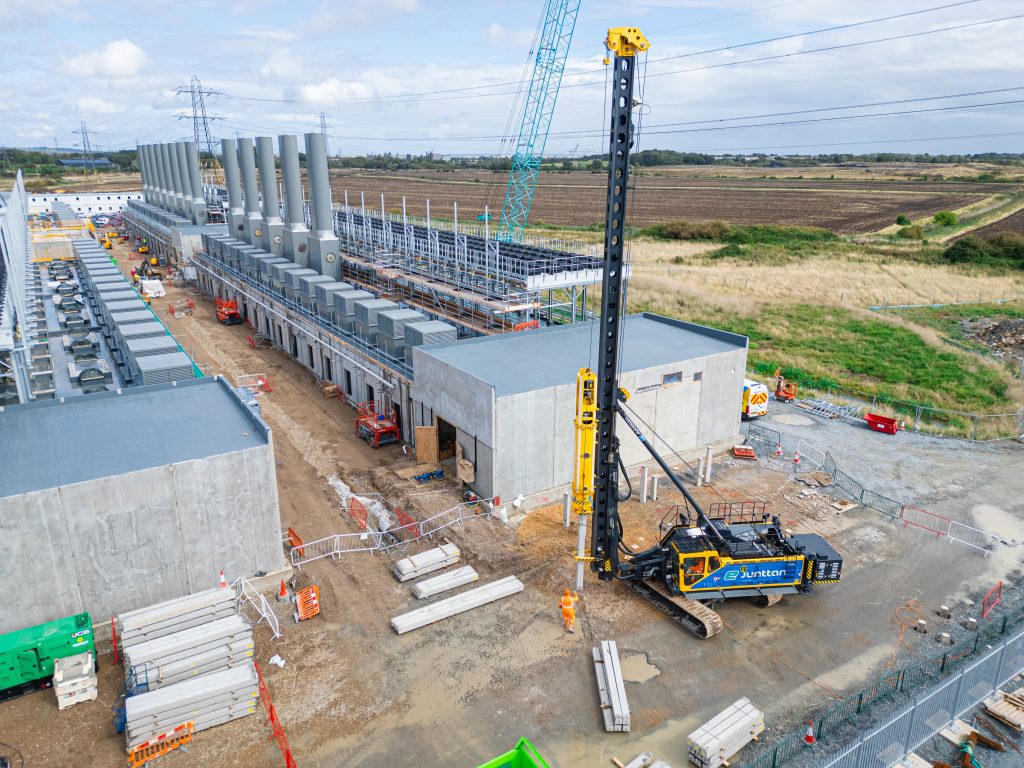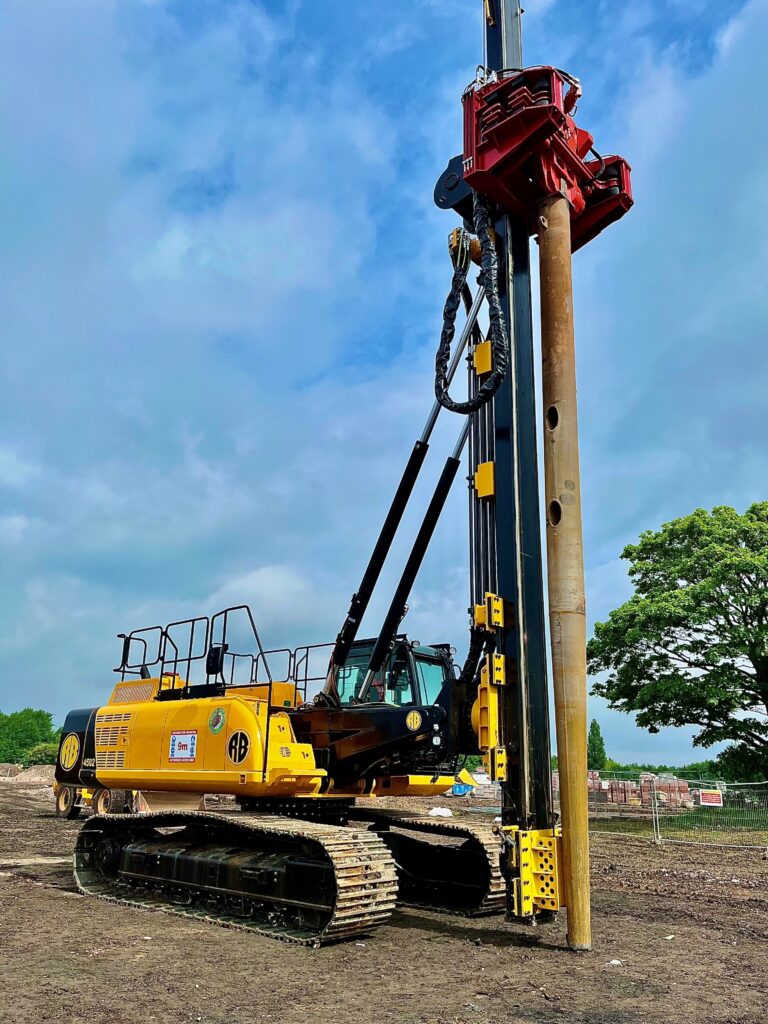Roger Bullivant Limited (RBL) has successfully installed Driven Precast Concrete Piles, manufactured using very low carbon concrete, at Statera Energy’s live infrastructure site, Thurrock Flexible Generation, supporting the development of a Gas Peaker facility and a 275kV substation.
The project demonstrates RBL’s commitment to sustainable construction and innovation in the infrastructure sector. The piles were installed using the UK’s first fully battery-powered pile driving rig, the Junttan PMx2e, up to 30m in depth. The deployment of the fully electric rig not only reduced emissions and noise on site but also marked a significant step forward in delivering very low carbon foundation solutions using RBL’s precast concrete piles.
This latest phase builds on a successful earlier programme of works delivered by RBL on the same site. The original scope involved multiple rigs operating across the main structures, where RBL’s driven precast solution was selected by the client for its speed, cleanliness, cost-effectiveness and minimal disruption to surrounding activities. The client’s decision to extend the piling areas reflects confidence in the performance and reliability of RBL’s approach. Ground conditions across the site included soft clay, dense sand and gravel, and chalk, requiring a reliable and adaptable foundation approach.
Working within a restricted footprint and surrounded by other subcontractors, RBL maintained a coordinated exclusion zone in partnership with Jones Bros Ltd to ensure safe and efficient operations.
Commenting on the project, Richard Taylor, Operations Director at RBL, said, “This installation is a clear example of how Roger Bullivant Limited is at the forefront of innovation in foundation engineering. By combining very low carbon precast concrete with electric rig technology, we’re not only reducing emissions but also setting new standards towards sustainable delivery in the infrastructure sector.”
The use of the electric rig supports RBL’s wider group sustainability goal: a 40% reduction in Scope 1 and 2 greenhouse gas emissions, and a 20% reduction in Scope 3 emissions by 2030.




